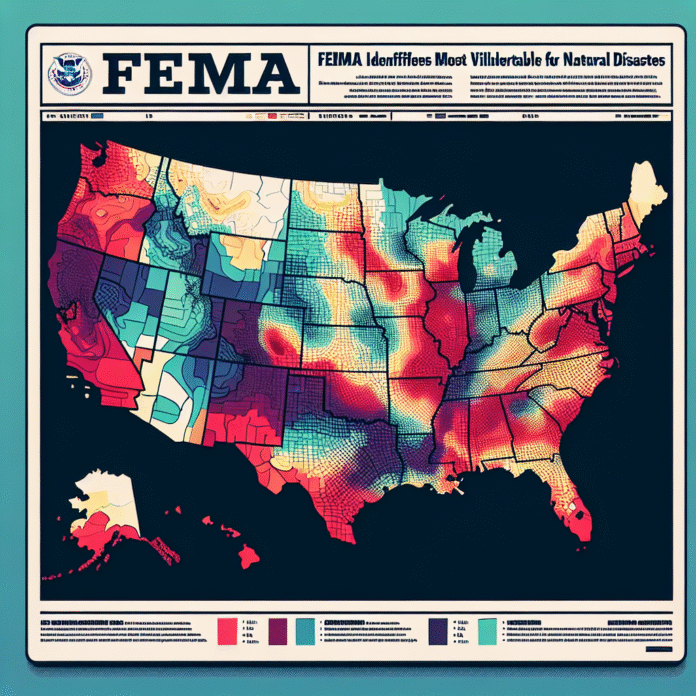FEMA Identifies Areas Most Vulnerable to Natural Disasters
NewsBreak Local News and Alerts
FEMA Identifies the Most Vulnerable Regions for Natural Disasters
According to recent assessments by the Federal Emergency Management Agency (FEMA), certain areas across the United States are particularly susceptible to the devastating impacts of natural disasters. These rankings are based on a variety of factors, including historical data, geographic conditions, and the likelihood of future events.
Understanding the Risk Factors
The regions identified by FEMA often face a combination of threats, such as hurricanes, floods, wildfires, earthquakes, and tornadoes. For instance, coastal states are frequently at risk of hurricanes and tropical storms, while areas in the West may contend with wildfires and seismic activity. The agency evaluates these risks not only by past occurrences but also by considering population density and infrastructure resilience.
Key Regions at High Risk
Some of the most vulnerable regions include:
- Florida: With its long coastline, Florida is prone to hurricanes and tropical storms, making it one of the top states for disaster preparedness.
- California: Known for its beautiful landscapes, California also faces significant risks from wildfires and earthquakes, requiring robust emergency response plans.
- Texas: This state experiences a variety of natural disasters, including hurricanes, tornadoes, and flooding, particularly in its coastal and central regions.
- Louisiana: Vulnerable to hurricanes and flooding, Louisiana’s geography and climate create significant challenges for disaster management.
- Puerto Rico: As a U.S. territory, Puerto Rico faces severe threats from hurricanes and tropical storms, necessitating ongoing recovery efforts and planning.
Preparedness and Response Strategies
In light of these vulnerabilities, FEMA emphasizes the importance of preparedness and community resilience. This includes developing comprehensive emergency plans, conducting regular training and drills, and increasing public awareness about disaster risks. Additionally, collaboration with local governments and organizations is vital for effective response and recovery efforts.
The Role of Technology in Disaster Management
Advancements in technology are also transforming how communities prepare for and respond to natural disasters. Tools such as early warning systems, mobile apps for emergency alerts, and data-driven analysis help enhance situational awareness and improve response times. Utilizing Geographic Information Systems (GIS) can aid in mapping high-risk areas and planning evacuation routes.
Conclusion
As climate change continues to impact weather patterns and increase the frequency of extreme events, it is crucial for both individuals and communities to stay informed about their risks. By understanding the areas deemed riskiest for natural disasters and implementing effective preparedness strategies, we can mitigate the impacts of these events and protect lives and property.


